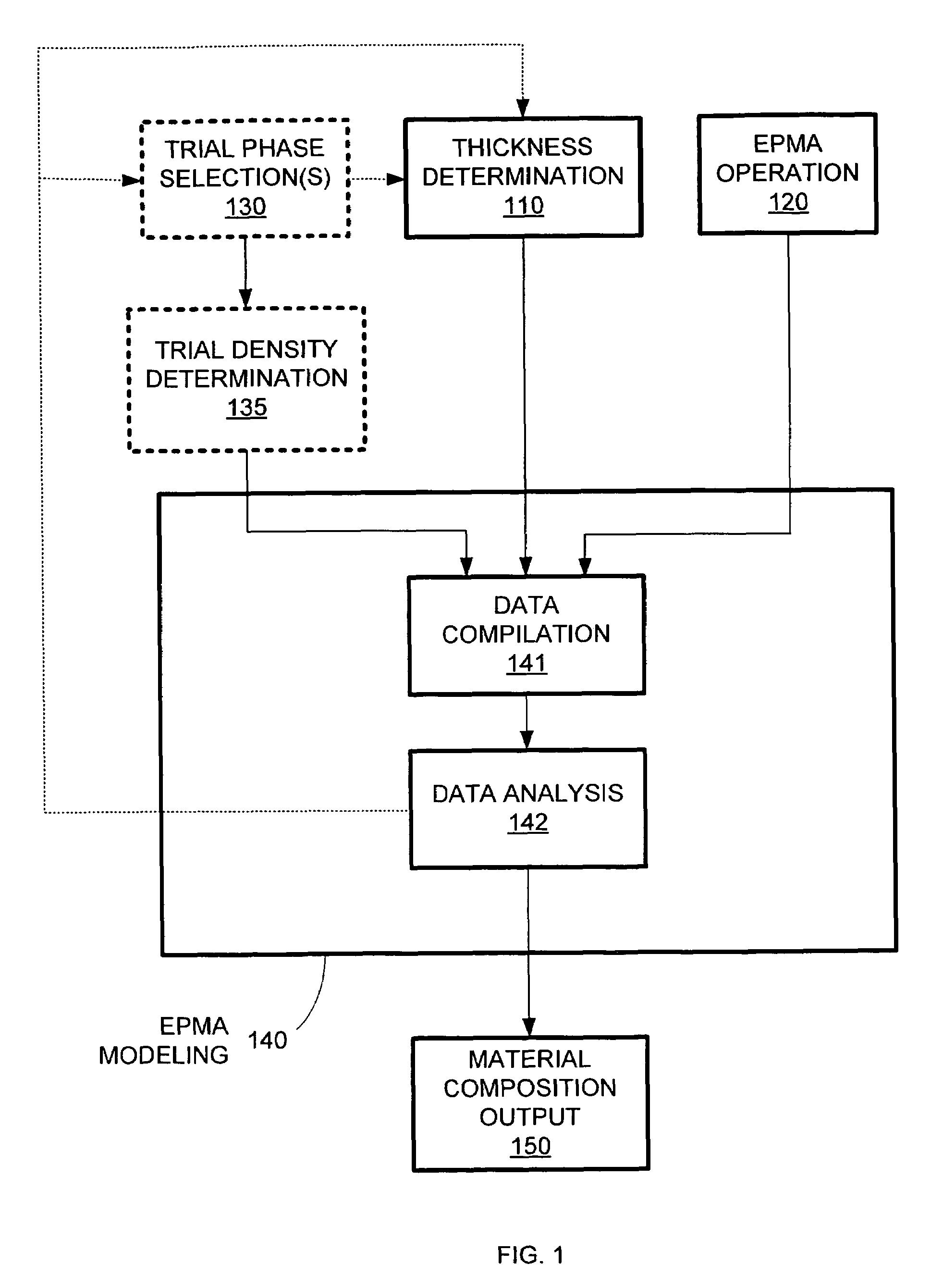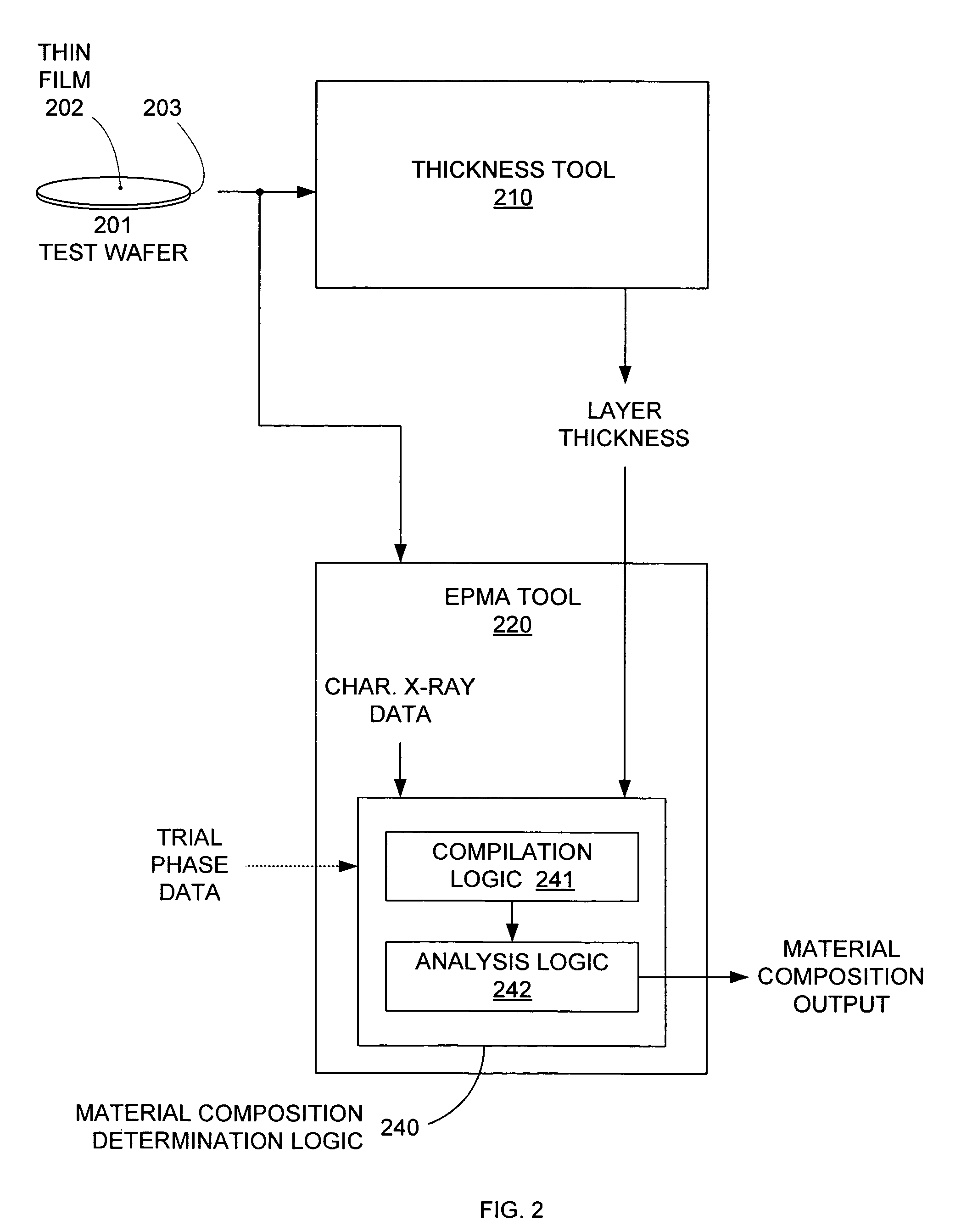Material composition analysis system and method
a composition analysis and composition technology, applied in the field of semiconductor metrology, can solve the problems of insufficient selectiveness, insufficient selection, and inability to effectively determine the material properties of a multi-layer film stack, and achieve the effect of accurately and accurately determining the phase of specific device layers
- Summary
- Abstract
- Description
- Claims
- Application Information
AI Technical Summary
Benefits of technology
Problems solved by technology
Method used
Image
Examples
Embodiment Construction
[0018]Conventional systems and methods cannot effectively determine the material properties of a thin film formed on a multi-layer film stack that shares an element with top thin film. Typical nondestructive phase determination systems (e.g., XRF and XRD) are too slow, too imprecise (i.e., large spot size), and are not selective enough to provide accurate material composition determinations in a production environment. Destructive techniques (e.g., TEMS and SIMS) that can provide such material composition information are by definition not suitable for use in production line environments. To overcome these limitations of conventional systems and techniques, an electron probe microanalysis system can be used in conjunction with layer thickness data to efficiently and accurately determine material phase without any wafer-damaging effects.
[0019]Electron probe microanalysis (EPMA), which is sometimes referred to as electron microprobe analysis (EMPA), involves the measurement of characte...
PUM
| Property | Measurement | Unit |
|---|---|---|
| size | aaaaa | aaaaa |
| densities | aaaaa | aaaaa |
| densities | aaaaa | aaaaa |
Abstract
Description
Claims
Application Information
 Login to View More
Login to View More - R&D
- Intellectual Property
- Life Sciences
- Materials
- Tech Scout
- Unparalleled Data Quality
- Higher Quality Content
- 60% Fewer Hallucinations
Browse by: Latest US Patents, China's latest patents, Technical Efficacy Thesaurus, Application Domain, Technology Topic, Popular Technical Reports.
© 2025 PatSnap. All rights reserved.Legal|Privacy policy|Modern Slavery Act Transparency Statement|Sitemap|About US| Contact US: help@patsnap.com



